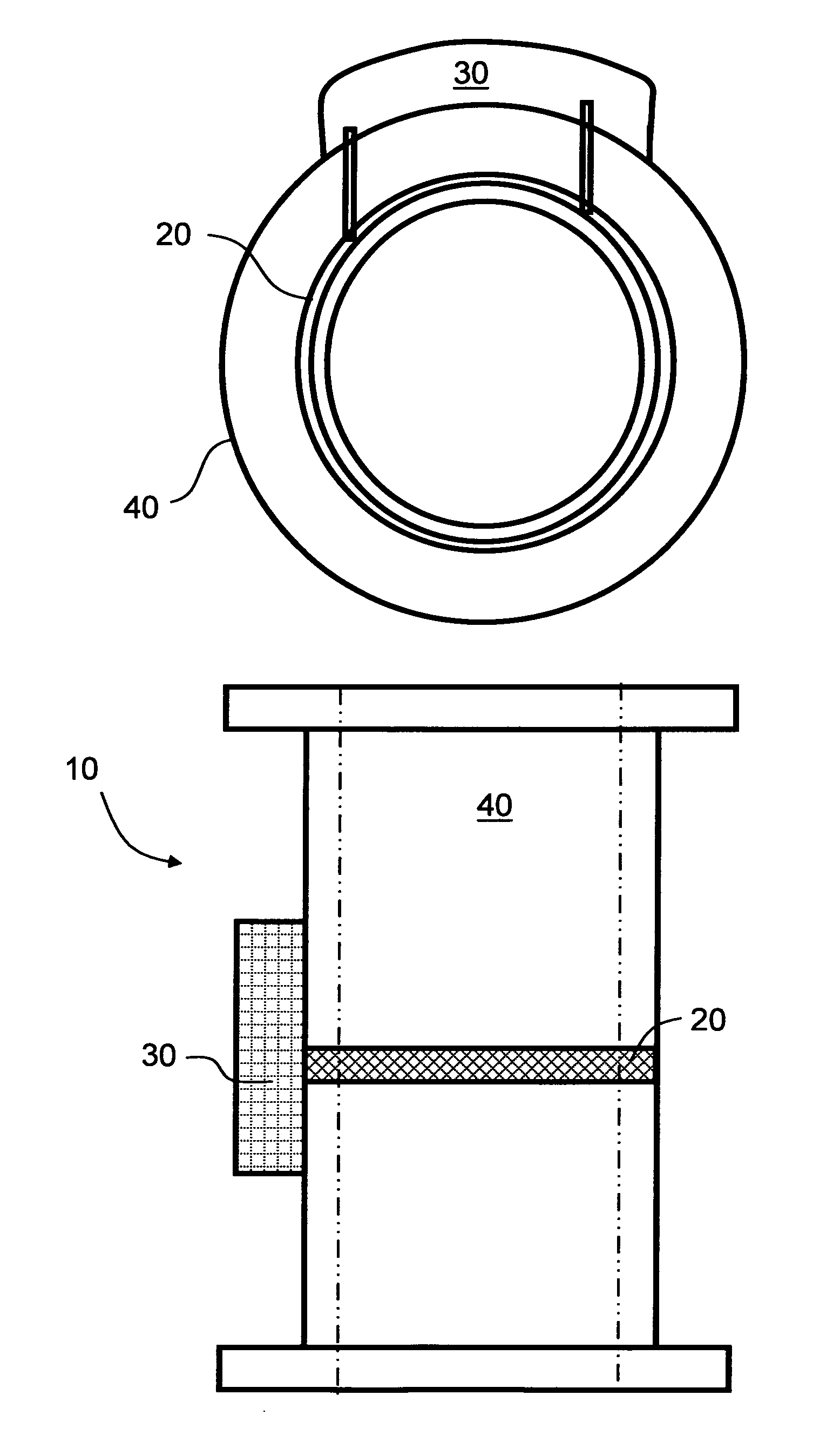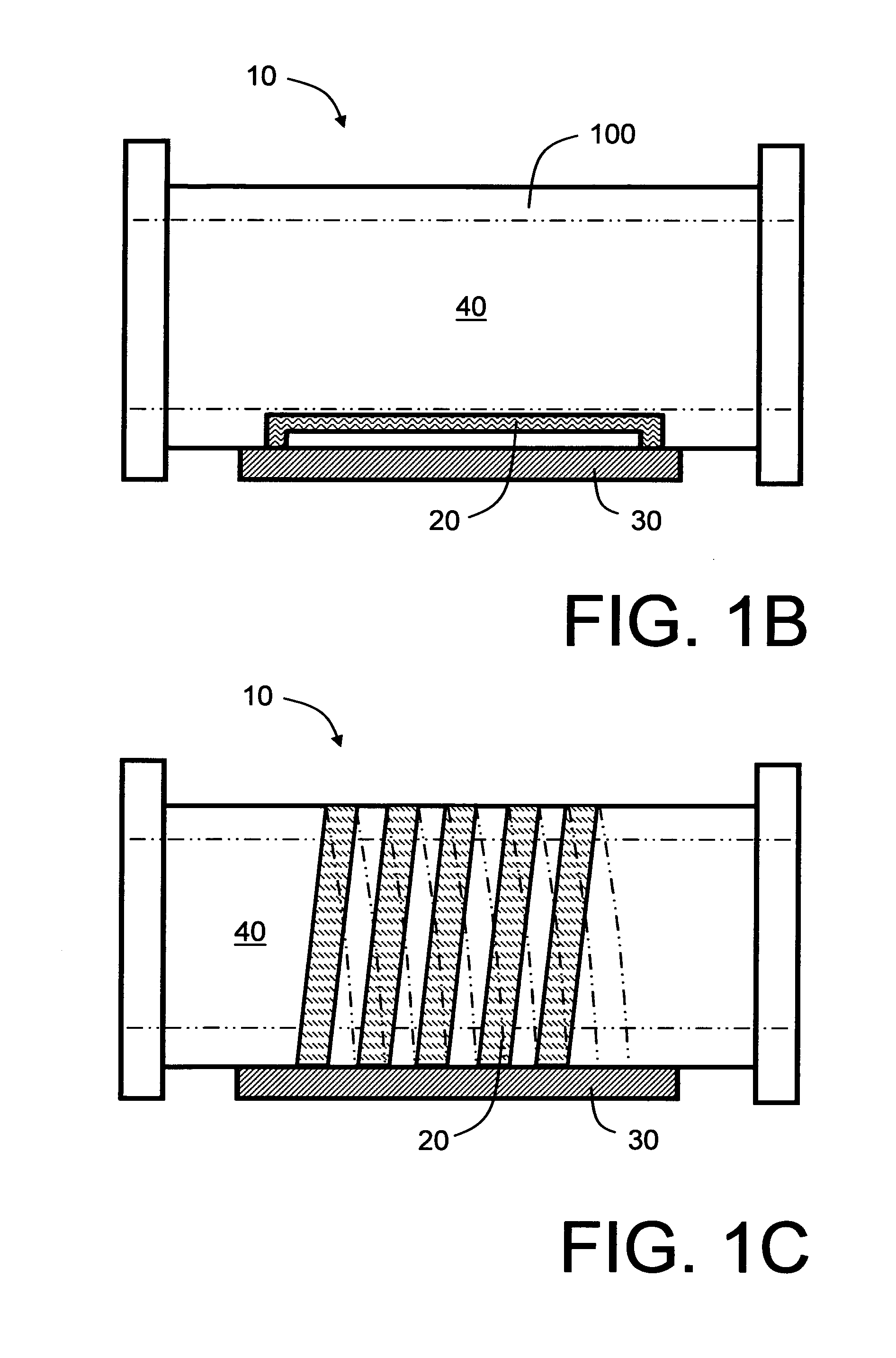Inline measuring apparatus and method
a technology of measuring apparatus and measuring method, which is applied in the direction of measuring device, material analysis using microwave means, instruments, etc., can solve the problems of reduced production, reduced chemical cost, and economic losses of petroleum industries
- Summary
- Abstract
- Description
- Claims
- Application Information
AI Technical Summary
Benefits of technology
Problems solved by technology
Method used
Image
Examples
Embodiment Construction
[0061]In overview, the present invention concerns apparatus which utilize complex permittivity measurements within a measurement volume spatially close to a wall of a pipe to detect thin layers of hydrate, scale, and / or wax deposits, and / or amounts of formation water in a liquid film close to a pipe wall. Equipment based on complex permittivity measurements are in use in other fields, for example as described in:[0062](i) US patent application no. 2009 / 152624 which pertains to use of a coplanar waveguide for non-invasive measurement on living tissue; and[0063](ii) U.S. Pat. No. 5,223,796 which pertains to measuring dielectric properties of a material,
but their application to detecting hydrate, wax, break-through of formation water and / or scale deposition is not known.
[0064]The present invention relates, for example, to a method and apparatus for measuring deposits of gas hydrates on an inside region of a pipe, and is applicable, for example, for providing early warning of hydrate fo...
PUM
| Property | Measurement | Unit |
|---|---|---|
| thickness | aaaaa | aaaaa |
| frequency | aaaaa | aaaaa |
| frequency | aaaaa | aaaaa |
Abstract
Description
Claims
Application Information
 Login to View More
Login to View More - R&D
- Intellectual Property
- Life Sciences
- Materials
- Tech Scout
- Unparalleled Data Quality
- Higher Quality Content
- 60% Fewer Hallucinations
Browse by: Latest US Patents, China's latest patents, Technical Efficacy Thesaurus, Application Domain, Technology Topic, Popular Technical Reports.
© 2025 PatSnap. All rights reserved.Legal|Privacy policy|Modern Slavery Act Transparency Statement|Sitemap|About US| Contact US: help@patsnap.com



